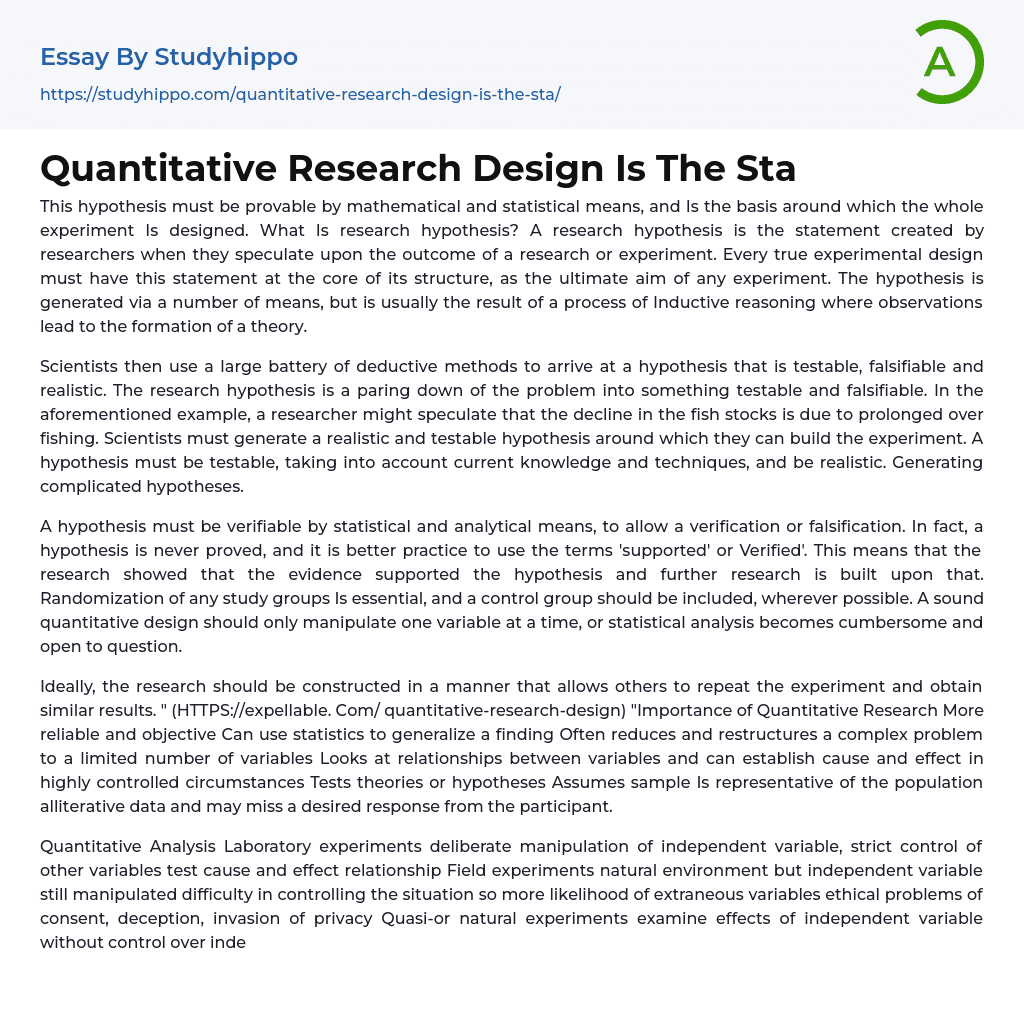The research hypothesis is a statement that researchers create to speculate about the outcome of a research or experiment. It must be mathematically and statistically provable and serves as the foundation for the entire experiment's design. This statement is vital in any authentic experimental design as it represents the ultimate goal of the experiment. Typically, the hypothesis is formulated through inductive reasoning, where observations contribute to theory development.
Scientists use various deductive methods to create testable and falsifiable hypotheses. These hypotheses are formed by narrowing down the problem to a statement that can be proven false through experimentation. For example, a scientist might suggest that the decline in fish populations is due to excessive fishing over a long period of time. To establish the basis for their experiment, they must construct a hypothesis that is both realistic and capable of being tested. Consequently
..., the hypothesis should consider current knowledge and techniques while also being feasible, necessitating the development of comprehensive hypotheses.
To establish the validity of a hypothesis, it is necessary to test it using statistical and analytical methods. It is crucial to understand that a hypothesis can never be definitively proven; instead, evidence can support or verify it. This means that research findings should demonstrate consistency between the evidence and the hypothesis, which forms a basis for further studies. In research involving study groups, randomization should be included, and if possible, a control group should also be incorporated. To ensure accurate results, quantitative designs should manipulate only one variable at a time; otherwise, statistical analysis may become cumbersome and subject to scrutiny.
Quantitative research is valuable because it offers trustworthy and unbiased results. Through
the use of statistics, it can make generalizations and simplify complex problems into a manageable set of variables. It examines connections between variables and can determine cause and effect in controlled situations. Furthermore, quantitative research assesses theories or hypotheses, assuming that the sample accurately represents the population. Nevertheless, it might fail to consider participants' desired responses.
The laboratory experiments in the Quantitative Analysis involve deliberately manipulating the independent variable and strictly controlling other variables to test the cause and effect relationship. Field experiments, on the other hand, take place in a natural environment where the independent variable is still manipulated, but there is difficulty in controlling the situation, leading to a higher likelihood of extraneous variables. Ethical problems such as consent, deception, and invasion of privacy may arise in field experiments.
Quasi-or natural experiments, unlike laboratory and field experiments, examine the effects of the independent variable without having control over the independent variable itself, as it often occurs naturally. This inability to manipulate the independent variable can be due to ethical reasons or its impossibility.
In addition, quantitative observation can be conducted to gather data in a quantitative context. This may involve counting the use of services or determining the number of people accessing those services. Busy and quiet times can also be ascertained through quantitative observation (http://libber.surrey.ac.uk/library/skills/illumination20theresearchandgimanagingtinformation/leisteredm).
Quantitative research design is considered excellent for finalizing results and proving or disproving a hypothesis. This structure has remained unchanged for centuries and is standard across many scientific fields and disciplines. Once the results are statistically analyzed, a comprehensive answer is obtained, allowing for legitimate discussion and publication.
Quantitative experiments eliminate external factors when properly designed, resulting in unbiased and
genuine outcomes. These experiments are beneficial for validating the findings obtained from qualitative experiments, leading to a conclusive answer and narrowing down potential avenues for future research. However, quantitative experiments can be challenging, costly, and time-consuming. They demand meticulous planning to ensure randomization and accurate allocation of control groups. Additionally, conducting quantitative studies often necessitates complex statistical analysis, posing difficulties for non-statistician scientists.
- Architecture essays
- Design essays
- Graffiti essays
- Graphic essays
- Interior design essays
- Painting essays
- Photography essays
- Sculpture essays
- Typography essays
- Experiment essays
- Explorer essays
- Hypothesis essays
- Observation essays
- Qualitative Research essays
- Research Methods essays
- Theory essays
- Coaching essays
- Critical Thinking essays
- homework essays
- Learning essays
- Library essays
- Listening essays
- Literacy essays
- Mentor essays
- Physical Education essays
- Project essays
- Reading essays
- Research essays
- Sex Education essays
- Social Studies essays
- Standardized Testing essays
- Study Plan essays
- Teaching essays
- Advertisement essays
- Advertising essays
- Anheuser-busch essays
- Audience Theory essays
- Brand essays
- Brands essays
- Competitor Analysis essays
- Consumer essays
- Detergent essays
- Marketing Management essays
- Marketing Mix essays
- Marketing Plan essays
- Marketing Research essays
- Marketing Strategy essays
- New Product Development essays
- Point Of Sale essays
- Price essays




